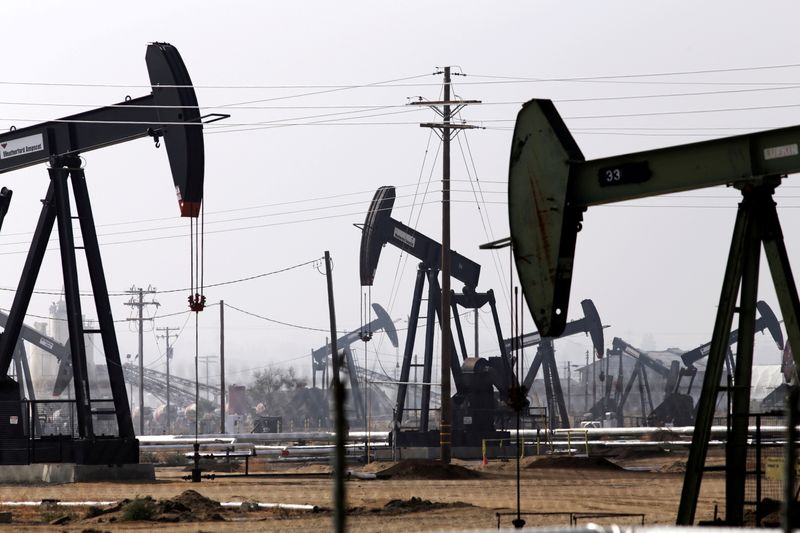NEW YORK (Reuters) – A surge in oil prices is drawing fund managers back into shares of oil and gas companies, even as some remain unsure that the price gains will stick.
Energy stocks in the S&P 500 are up 53.8% for the year to date compared with a 20.2% gain for the broader index, as rising demand from the global economic reopening collides with supply chain disruptions and inflation fears to boost energy prices to multi-year highs.
The rally has caught many fund managers by surprise and some are scrambling to catch up, betting that commodity prices will remain high in the face of burgeoning demand. Allocations to energy stocks among fund managers increased by 23 percentage points from last month to the largest overweight since March 2012, a BofA Global Research survey showed on Tuesday.
“I have a sneaking suspicion that energy prices may be elevated for a while because it will take some time for the supply side to catch up,” said Jack Janasiewicz, a portfolio strategist at Natixis Investment Managers who has been increasing his overweight in energy stocks.
Janasiewicz also said he believes surging prices for oil and gas companies will likely bring in money managers who have been underweight the sector and are nervous their comparative performance will suffer.
Many fund managers had spent years pruning their energy holdings, as clients demanded more exposure to environmentally friendly companies in their portfolios and an abundance of shale oil in the United States undercut the case for big rallies in prices. U.S. equity funds had an average of 2.6% of their portfolios in energy stocks in August, compared with 5% three years earlier, according to Morningstar data.
Supply bottlenecks and worker shortages that have helped push energy prices in Europe to record levels have helped change that calculus. Meanwhile, worries that a recent surge in inflation may be more persistent than previously expected have boosted the appeal of commodities as a hedge against rising consumer prices.
Brent crude futures topped $86 a barrel on Monday, their highest level since October 2018. U.S. West Texas Intermediate futures stand at $83.73, their highest since October 2014.
Exploration and production companies remain attractive if oil prices stay between $50 and $80 a barrel and do not rise high enough to start weighing on demand, said Eric Marshall, a fund manager at Hodges Capital Management who has positions in companies including Pioneer Natural Resources Co and Diamondback Energy Inc.
Energy companies have focused more on returning cash to shareholders through dividends and buybacks than gaining market share and have been slow to increase their rig counts as spot prices increase, he said.
Lower rig counts help buoy prices because they keep a lid on supply. While rigs operating in the United States have increased six weeks in a row, the total rig count is just now back to levels last seen in April 2020, according to Baker Hughes Co.
Yet some on Wall Street remain wary that the rally in oil prices can reverse if inflation proves to be transitory, demand slackens or energy companies invest too heavily in production. Past boom and bust cycles in commodity prices have been marked by rapid surges in oil prices followed by bruising declines: Oil plummeted from above $100 a barrel to around $30 between 2014 and 2016 as growth in shale drilling turned the United States into the world’s largest producer of crude oil.
Simon Wong, an energy analyst at Gabelli Funds, said that some market participants may be wary of companies ramping up production and flooding the market with supply.
“The generalist investors need to see two or three years of commitment from companies that they are not going to grow at all costs before they return en masse,” he said.
Michael Underhill, chief investment officer at Capital Innovations, said high costs will push some consumers to shift consumption to alternative energy sources or cut back on usage, causing oil prices to fall as much as 20% in the next 12 months.
“The old adage of ‘the best remedy for high oil prices is high oil prices’ will prove to be correct again,” Underhill said.
(Reporting by David Randall; Editing by Ira Iosebashvili and Steve Orlofsky)

























